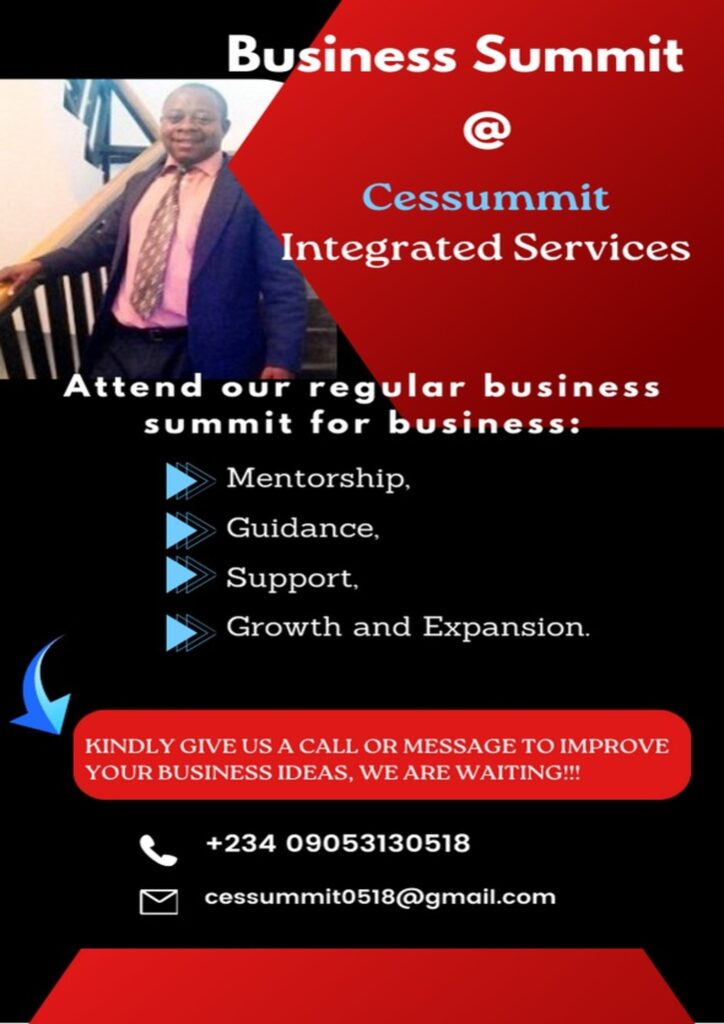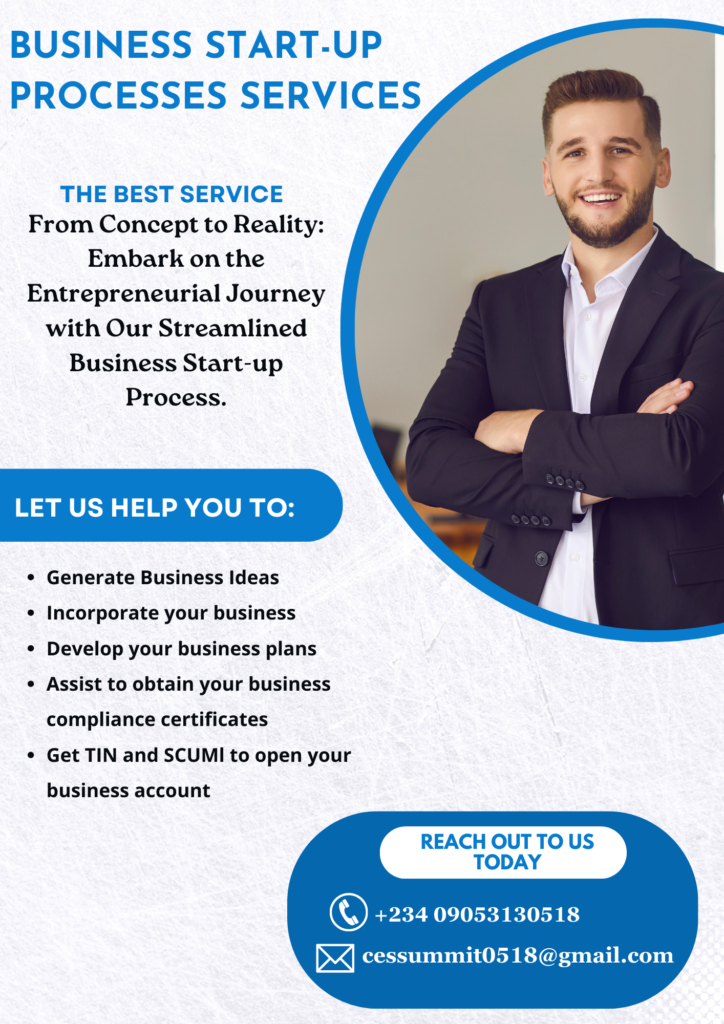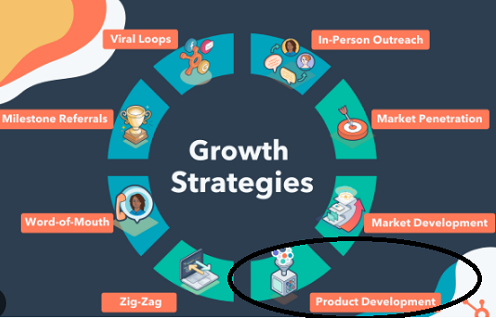
Driving Business Growth through Effective Product Development
Driving Business Growth through Effective Product Development – In today’s competitive marketplace, driving business growth is a top priority for companies across industries. One of the key drivers of this growth lies in effective product development strategies. Developing innovative and desirable products that meet customer needs and demands can not only attract new customers but also retain existing ones, fostering loyalty and boosting revenue. By focusing on product development as a strategic approach, businesses can tap into new markets, stay ahead of the competition, and ultimately achieve long-term success. In this article, we will explore the importance of effective product development in driving business growth and delve into some key strategies that can be implemented to achieve this goal.
Contents
- 1 The Post Focus:
- 2 Get Started:
- 2.1 Driving Business Growth through Effective Product Development
- 2.2 Driving Business Growth through Effective Product Development
- 2.3 Driving Business Growth through Effective Product Development
- 2.4 Understanding Product Development:
- 2.5 Driving Business Growth through Effective Product Development
- 2.6 Aligning Product Development with Business Goals:
- 2.7 Driving Business Growth through Effective Product Development
- 2.8 Market Research and Customer Insights:
- 2.9 Driving Business Growth through Effective Product Development
- 2.10 Driving Business Growth through Effective Product Development
- 2.11 Analyzing Market Trends and Competitive Landscape:
- 2.12 Driving Business Growth through Effective Product Development
- 2.13 Cross-functional Collaboration:
- 2.14 Driving Business Growth through Effective Product Development
- 2.15 Managing Risks and Challenges:
- 2.16 Driving Business Growth through Effective Product Development
- 2.17 Continuous Improvement and Innovation:
- 2.18 Driving Business Growth through Effective Product Development
- 2.19 Driving Business Growth through Effective Product Development
- 2.20 Driving Business Growth through Effective Product Development
- 2.21 Cessummit Business Development & Support Services:
- 2.22 Driving Business Growth through Effective Product Development
- 2.23 Read Also:
- 2.24 Finally:
- 2.25 Share this:
- 2.26 Like this:
The Post Focus:
This post will let you know what you gain by reading through this article. It will then begin to address certain concepts relating to driving effective product development. Just read on.
Now, What do you gain from reading Driving Business Growth through Effective Product Development?
By reading “Driving Business Growth through Effective Product Development,” you can gain several valuable insights and benefits:
- Understanding the importance of product development: The article will highlight why product development is a crucial factor in driving business growth. It will provide you with a comprehensive overview of how developing innovative and desirable products can lead to increased market share, customer loyalty, and revenue.
- Learning key strategies: The article will delve into various strategies that can be employed to ensure effective product development. These strategies may include market research, customer feedback analysis, prototyping, agile development methodologies, and more. By understanding and implementing these strategies, you can enhance your product development process and increase your chances of success.
- Gaining a competitive edge: In today’s fast-paced business environment, staying ahead of the competition is essential. The article will shed light on how effective product development can give your business a competitive edge by enabling you to deliver superior products that meet customer needs and expectations. You will learn how to identify market gaps, differentiate your offerings, and adapt to changing market trends through robust product development practices.
Driving Business Growth through Effective Product Development
- Expanding into new markets: Effective product development can open doors to new market opportunities. The article will explore how developing new and innovative products can help you tap into previously untapped markets and attract a broader customer base. You will gain insights into expanding your product portfolio and targeting diverse customer segments.
- Maximizing customer satisfaction and loyalty: Customer satisfaction is key to business success. The article will highlight how effective product development plays a crucial role in meeting customer needs, enhancing their experience, and fostering loyalty. By developing products that address pain points and deliver value, you can strengthen your customer relationships and create brand advocates.
- Long-term business growth: Ultimately, the article will emphasize how effective product development can contribute to long-term business growth. By consistently innovating, refining your product offerings, and adapting to evolving customer preferences, you can establish your business as a market leader and secure a sustainable growth trajectory.
Overall, reading “Driving Business Growth through Effective Product Development” will equip you with knowledge, strategies, and insights to optimize your product development efforts, drive business growth, and achieve your organizational goals.
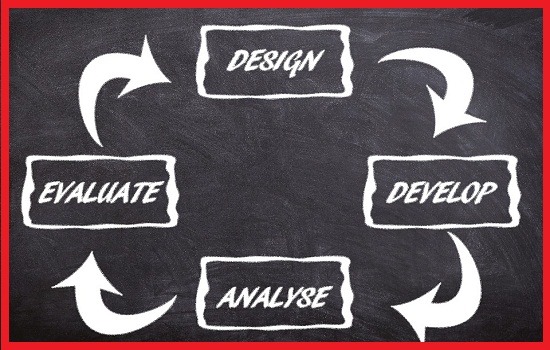
Driving Business Growth through Effective Product Development
So, what is Business Growth?
Business growth refers to the increase in a company’s revenue, market share, customer base, and overall size over time. It is a measure of a company’s expansion and progress in achieving its goals and objectives. Business growth can occur in various forms, including:
- Revenue Growth: This refers to an increase in the company’s sales and revenue over a specific period. It can be achieved by attracting new customers, increasing the average transaction value, or selling additional products or services to existing customers.
- Market Share Growth: Market share refers to the portion of the total market that a company controls. Business growth can involve expanding market share by capturing a larger portion of the market compared to competitors. This can be accomplished through effective marketing, competitive pricing, product differentiation, or entering new markets.
- Customer Base Growth: Increasing the number of customers or clients is another aspect of business growth. Acquiring new customers can be achieved through targeted marketing and sales efforts, excellent customer service, referrals, or entering new markets. Retaining existing customers and fostering customer loyalty also contribute to business growth.
Driving Business Growth through Effective Product Development
- Expansion into New Markets: Business growth may involve expanding into new geographic regions, targeting different customer segments, or entering new industry verticals. This expansion allows a company to tap into untapped markets, diversify its revenue streams, and reduce reliance on a single market or product.
- Operational Growth: This refers to the scaling and expansion of a company’s operational capabilities to handle increased demand or accommodate larger customer bases. It may involve hiring additional employees, expanding physical infrastructure, improving production processes, or leveraging technology and automation.
- Profitability and Financial Growth: Business growth should ideally lead to increased profitability and financial stability. As revenue and market share expand, businesses can achieve economies of scale, reduce costs, and improve profit margins. This financial growth enables reinvestment in the company, funding research and development, and further expansion.
It is important to note that business growth is not limited to a single aspect but encompasses a holistic development across different dimensions of the company’s operations. Successful business growth requires effective planning, strategic decision-making, innovation, market analysis, customer focus, and continuous improvement to sustain and maximize expansion opportunities.
Driving Business Growth through Effective Product Development
And what is Product Development?
Product development refers to the process of creating and introducing new or improved products or services to the market. It involves the entire journey from ideation and conceptualization to design, testing, production, and launch. The goal of product development is to meet customer needs, address market gaps, and create offerings that provide value and generate revenue for the company.
Product development typically follows a structured and iterative approach that involves several stages. These stages may vary depending on the industry and company, but they generally include:
- Idea Generation: This stage involves brainstorming and gathering potential product ideas. Ideas can come from various sources, such as customer feedback, market research, internal teams, or emerging trends. The goal is to generate a pool of ideas that have the potential to be developed into successful products.
- Concept Development: In this stage, selected ideas are further refined and developed into product concepts. This includes defining the product’s features, benefits, target market, and initial cost considerations. Concept development may involve creating prototypes, conducting market research, and evaluating the feasibility and viability of the ideas.
- Design and Engineering: Once a product concept is finalized, the design and engineering phase begins. This stage involves translating the concept into detailed specifications, creating product prototypes, and refining the design based on functionality, aesthetics, manufacturability, and user experience. Design and engineering teams collaborate to ensure the product meets technical requirements and aligns with the overall vision.
Driving Business Growth through Effective Product Development
- Testing and Validation: Products undergo rigorous testing and validation to ensure they meet quality standards and customer expectations. This includes functional testing, performance testing, durability testing, and user testing. Feedback from testing is used to refine and improve the product design, addressing any issues or concerns.
- Manufacturing and Production: After successful testing and validation, the product moves into the manufacturing and production phase. This involves setting up production processes, sourcing raw materials, establishing quality control measures, and producing the final product at scale. Manufacturing may be done in-house or outsourced to third-party suppliers.
- Launch and Commercialization: The final stage is product launch and commercialization. This involves developing marketing strategies, creating promotional materials, determining pricing, and planning distribution channels. The goal is to generate awareness, attract customers, and drive sales. Ongoing monitoring and feedback from customers and the market inform further product improvements and updates.
Effective product development requires cross-functional collaboration, market research, customer insights, innovation, and a keen understanding of industry trends. It aims to create products that not only meet customer needs but also differentiate the company from competitors and drive business growth.
If you are here, I now know that you are ready to get all you need to get in this Driving Business Growth through Effective Product Development. So, let’s get started.
Driving Business Growth through Effective Product Development
Get Started:
Introduction: We get started by discussing the Importance of driving business growth and the Role of effective product development in achieving growth.
Driving business growth is a fundamental goal for companies across industries. Whether a business is a startup, small-scale enterprise, or multinational corporation, achieving sustainable growth is crucial for long-term success and profitability. One of the key drivers of business growth is effective product development.
Driving Business Growth through Effective Product Development
Product development refers to the process of creating, designing, and enhancing products or services to meet customer needs and preferences. It encompasses various stages, from conceptualization and market research to prototyping, testing, and launch. A well-executed product development strategy plays a pivotal role in achieving business growth by offering innovative solutions, attracting and retaining customers, and gaining a competitive edge in the market.
Role of Effective Product Development in Achieving Growth:
- Meeting Customer Needs: Effective product development starts with a deep understanding of customer needs and desires. By conducting market research, gathering customer feedback, and analyzing trends, businesses can develop products that address specific pain points and deliver value. Meeting customer needs not only drives initial sales but also fosters customer loyalty and generates positive word-of-mouth, leading to repeat business and organic growth.
- Innovation and Differentiation: In today’s rapidly evolving business landscape, innovation is vital for staying ahead of the competition. Effective product development involves introducing new features, functionalities, or technologies that set a product apart from existing offerings. By constantly innovating and differentiating their products, businesses can capture the attention of customers, expand their market share, and drive growth through increased sales and market penetration.
- Expanding Market Reach: Developing new products or improving existing ones allows businesses to tap into new market segments or expand their presence in current markets. For example, a software company might introduce a mobile app version of its product to reach a broader audience. By diversifying their product portfolio and targeting new customer segments, businesses can access untapped markets and create growth opportunities.
Driving Business Growth through Effective Product Development
- Competitive Advantage: Effective product development enables businesses to gain a competitive advantage in the market. By consistently offering superior products or services, companies can position themselves as industry leaders, attracting customers away from competitors. A strong product development strategy allows businesses to stay ahead of market trends, respond to customer demands, and maintain relevance, all of which contribute to sustained growth and market dominance.
- Revenue Generation: The successful development and launch of new products directly contribute to revenue growth. Each new product represents an additional revenue stream, expanding the business’s income potential. Moreover, effective product development can lead to premium pricing, increased customer lifetime value, and cross-selling or upselling opportunities, all of which drive revenue growth and enhance the financial performance of a business.
Driving Business Growth through Effective Product Development
Conclusion:
Driving business growth is essential for companies to thrive and succeed in today’s competitive marketplace. Effective product development plays a pivotal role in achieving growth by meeting customer needs, fostering innovation, expanding market reach, gaining a competitive advantage, and generating revenue. By prioritizing product development as a strategic driver of growth, businesses can build a sustainable path to success and create value for their customers and stakeholders.
Driving Business Growth through Effective Product Development
Understanding Product Development:
This is how we get you to understand the meaning, and components of product development
Product development is the process of creating and refining new or existing products or services to meet customer needs and market demands. It involves various stages, activities, and considerations that contribute to the successful creation, design, and launch of a product. Let’s explore the key components of product development:
- Idea Generation: The product development process begins with generating ideas for new products or improvements to existing ones. Ideas can come from various sources such as customer feedback, market research, internal brainstorming sessions, competitive analysis, emerging technologies, or industry trends.
- Market Research: Once an idea is identified, conducting market research is crucial. This step involves analyzing the target market, customer preferences, competitors, and market trends. Market research helps gather insights and data to validate the viability of the product idea, identify potential customer segments, and understand market demand.
- Concept Development: In this phase, the product concept takes shape. It involves defining the product’s features, benefits, and value proposition. Concept development may include creating rough sketches, conceptual designs, or prototypes to visualize the product and gather feedback from stakeholders.
Driving Business Growth through Effective Product Development
- Design and Engineering: Once the concept is established, the design and engineering phase begins. It involves translating the product concept into detailed design specifications, considering factors such as functionality, aesthetics, usability, manufacturability, and cost. This stage may include CAD (Computer-Aided Design) modeling, prototyping, and testing to refine the product design.
- Testing and Validation: Testing and validation are critical steps in product development. This involves rigorous testing of prototypes or samples to ensure that the product meets quality standards, performs as intended, and addresses customer needs effectively. Feedback from testing helps identify potential issues, make necessary refinements, and improve the product’s overall performance and reliability.
- Manufacturing and Production: Once the product design is finalized and validated, it moves into the manufacturing and production phase. This stage involves scaling up production, selecting suppliers, establishing production processes, and ensuring quality control measures are in place. Manufacturing considerations include cost efficiency, sourcing raw materials, production capacity, and logistics.
Driving Business Growth through Effective Product Development
- Marketing and Launch: In preparation for the product launch, marketing strategies, and campaigns are developed. This includes branding, packaging, pricing, and promotional activities. A well-executed marketing plan helps generate awareness, create demand, and generate sales for the product.
- Post-Launch Evaluation: After the product is launched, it is essential to evaluate its performance and gather feedback from customers. This evaluation helps identify areas for improvement, gather insights for future product iterations, and ensure customer satisfaction. The post-launch evaluation also involves monitoring sales, analyzing market responses, and making necessary adjustments to enhance the product’s success and profitability.
Throughout the product development process, effective communication, collaboration, and cross-functional teamwork are crucial. These components work together to ensure that the final product aligns with customer needs, delivers value, meets quality standards, and contributes to the overall growth and success of the business.
Driving Business Growth through Effective Product Development
Aligning Product Development with Business Goals:
In this segment, we consider Identifying business objectives and target market and Establishing product development goals in alignment with business strategy. And, Conducting feasibility studies and cost-benefit analyses.
Aligning Product Development with Business Goals:
To ensure that product development efforts align with business objectives, it is essential to establish clear business goals and identify the target market. This alignment helps focus product development activities, maximize customer value, and drive business growth. Here are the key steps to align product development with business goals:
- Identify Business Objectives: Start by defining the overarching business objectives and strategies. These could include increasing market share, expanding into new markets, improving profitability, enhancing customer satisfaction, or outperforming competitors. Clear business objectives provide a framework for product development efforts and guide decision-making throughout the process.
- Define Target Market: Understand the target market for the product by conducting market research and segmentation analysis. Identify the specific customer segments or demographics that the product will cater to. This includes understanding their needs, preferences, pain points, and buying behavior. Aligning product development with the target market ensures that the product addresses customer requirements and has a higher chance of success in the market.
- Establish Product Development Goals: Once the business objectives and target market are defined, establish product development goals that align with them. These goals should be specific, measurable, achievable, relevant, and time-bound (SMART). For example, goals could be to develop a product that captures a certain market share within a specific time frame, to achieve a target revenue level, or to launch a product that outperforms competitors on specific features.
Driving Business Growth through Effective Product Development
- Conduct Feasibility Studies: Before proceeding with product development, conduct feasibility studies to assess the technical, operational, and economic viability of the product. This involves evaluating factors such as technical feasibility, market potential, resource availability, regulatory compliance, and intellectual property considerations. Feasibility studies help identify potential challenges and risks early on, allowing for informed decision-making and minimizing costly mistakes.
- Cost-Benefit Analysis: Perform a cost-benefit analysis to evaluate the financial implications of product development. Assess the expected costs associated with design, development, production, marketing, and distribution against the anticipated benefits such as revenue, market share, customer acquisition, and competitive advantage. This analysis helps determine the feasibility and potential return on investment (ROI) of the product development project.
By aligning product development goals with business strategy, and target market, and conducting thorough feasibility studies and cost-benefit analyses, companies can ensure that their product development efforts are focused, strategic, and have a higher likelihood of success. This alignment helps maximize the value delivered to customers, drive business growth, and achieve the desired business objectives.
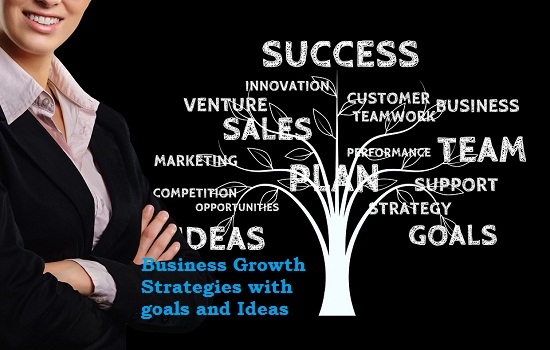
Driving Business Growth through Effective Product Development
Market Research and Customer Insights:
Importance of market research in product development. Methods for gathering customer insights and feedback. Then, analyzing market trends and the competitive landscape
Market Research and Customer Insights:
Market research plays a crucial role in product development by providing valuable insights into customer needs, market trends, and the competitive landscape. Here are the key reasons why market research is important in the product development process:
- Customer Understanding: Market research helps businesses gain a deep understanding of their target customers. It helps identify their preferences, behaviors, pain points, and unmet needs. This customer-centric approach ensures that the product development efforts are focused on creating solutions that resonate with the target market.
- Demand Validation: Market research helps validate the demand for a product or service before investing significant resources into development. By conducting surveys, interviews, or focus groups, businesses can gauge customer interest, willingness to pay, and potential adoption rates. This validation minimizes the risk of developing products that have limited market demand.
- Competitive Analysis: Market research enables businesses to assess the competitive landscape. It helps identify existing competitors, their products, pricing strategies, distribution channels, and marketing tactics. This analysis provides insights into how to differentiate the product and gain a competitive advantage in the market.
- Identifying Market Opportunities: Market research identifies market gaps, emerging trends, and untapped customer segments. This information helps businesses identify new product development opportunities. By understanding the changing needs and preferences of customers, companies can introduce innovative products or enhance existing offerings to capture these opportunities.
Driving Business Growth through Effective Product Development
Methods for Gathering Customer Insights and Feedback:
To gather customer insights and feedback during the product development process, businesses can utilize various research methods. Here are some commonly used methods:
- Surveys: Surveys are effective for collecting quantitative data and opinions from a large number of customers. Online surveys, email surveys, or in-person surveys can be conducted to gather feedback on product features, pricing, usability, and overall satisfaction.
- Interviews: One-on-one interviews allow for in-depth conversations with individual customers or target market representatives. Interviews help uncover nuanced insights, motivations, and specific pain points that may not be captured through other methods.
- Focus Groups: Focus groups involve a small group of participants who discuss and provide feedback on the product. It allows for interactive discussions and idea generation, providing qualitative insights into customer preferences and perceptions.
- User Testing: User testing involves observing and gathering feedback from users as they interact with prototypes or early versions of the product. This method helps identify usability issues, areas for improvement, and user experience preferences.
Driving Business Growth through Effective Product Development
Analyzing Market Trends and Competitive Landscape:
Analyzing market trends and the competitive landscape is essential for informed decision-making in product development. Here’s how it can be done:
- Market Trend Analysis: Monitor market trends through industry reports, market research studies, trade publications, and online resources. Analyze trends related to customer preferences, technology advancements, regulatory changes, and market demand. This analysis helps identify emerging opportunities and informs product development decisions.
- Competitor Analysis: Conduct a thorough analysis of competitors’ products, pricing, marketing strategies, and market positioning. Identify their strengths, weaknesses, and gaps in the market that can be leveraged for product differentiation. This analysis helps understand customer expectations and competitive benchmarks for the product.
- Customer Feedback Analysis: Analyze customer feedback collected through surveys, interviews, and user testing. Look for patterns, common themes, and specific suggestions or complaints. This analysis provides insights into customer preferences, pain points, and areas where the product can be improved.
- Data Analytics: Utilize data analytics tools to analyze customer behavior, purchase patterns, and market trends. Analyzing data from sources such as website analytics, social media interactions, or sales data can reveal valuable insights for product development and marketing strategies.
Driving Business Growth through Effective Product Development
By conducting market research, gathering customer insights and feedback, and analyzing market trends and the competitive landscape, businesses can make informed decisions throughout the product development process. This ensures that the final product meets customer needs, aligns with market trends, and stands out from competitors. Market research and customer insights provide a solid foundation for developing products that have a higher chance of success in the market. It minimizes the risk of investing resources into products that may not meet customer demand or fail to differentiate from existing offerings.
Additionally, gathering customer insights and feedback fosters a customer-centric approach, allowing businesses to prioritize features, functionalities, and improvements that align with customer preferences. By actively involving customers in the product development process, businesses can build a sense of ownership and increase customer satisfaction, ultimately leading to higher adoption rates and customer loyalty.
Driving Business Growth through Effective Product Development
Analyzing market trends and the competitive landscape provides valuable market intelligence. It helps businesses understand the dynamics of the market, identify potential threats and opportunities, and adapt their product development strategies accordingly. By staying abreast of industry trends and monitoring competitors’ activities, businesses can position their products strategically and differentiate themselves in the market.
Overall, market research, customer insights, and analysis of market trends and the competitive landscape are integral parts of the product development process. They inform decision-making, drive innovation, mitigate risks, and increase the chances of creating successful products that meet customer needs, capture market opportunities, and contribute to business growth.

Driving Business Growth through Effective Product Development
Cross-functional Collaboration:
Creating a multidisciplinary product development team. Facilitating effective communication and collaboration among team members. Leveraging diverse expertise for innovative product solutions
Cross-functional collaboration is essential for creating innovative product solutions by leveraging diverse expertise from multidisciplinary team members. To facilitate effective communication and collaboration among team members, consider the following steps:
- Define clear objectives: Start by establishing clear goals and objectives for the product development team. Ensure that all team members understand the purpose and desired outcomes of the project.
- Create a diverse team: Build a multidisciplinary team comprising individuals with different skills, backgrounds, and areas of expertise relevant to the product development process. This diversity will bring fresh perspectives and ideas to the table.
- Foster a culture of trust and respect: Encourage an environment where team members feel comfortable expressing their opinions, asking questions, and challenging ideas. Promote open communication and respect for different viewpoints.
- Establish effective communication channels: Set up regular communication channels, such as team meetings, video conferences, and collaboration tools, to facilitate open and transparent communication among team members. Encourage both synchronous and asynchronous communication to accommodate different working styles and time zones.
- Encourage active listening: Emphasize the importance of active listening within the team. Encourage team members to pay attention, understand others’ perspectives, and ask clarifying questions when needed. This helps foster mutual understanding and prevents miscommunication.
- Promote knowledge sharing: Encourage team members to share their knowledge, experiences, and expertise. This can be done through presentations, workshops, training sessions, or informal discussions. By sharing knowledge, team members can learn from each other and leverage their collective expertise.
- Establish collaborative decision-making processes: Implement decision-making processes that involve input from all team members. Encourage brainstorming sessions, group discussions, and consensus-building exercises to ensure that decisions are made collectively, considering diverse perspectives.
- Foster a problem-solving mindset: Encourage the team to approach challenges and problems as opportunities for collaboration and innovation. Create a culture where failures are seen as learning experiences and encourage experimentation and creative problem-solving.
- Provide leadership and support: Assign a team leader or project manager who can facilitate the collaboration process, resolve conflicts, and provide support to team members. This leader should promote a collaborative mindset and ensure that everyone has the resources and support they need to contribute effectively.
- Celebrate achievements and milestones: Recognize and celebrate the achievements and milestones reached by the team. This fosters a sense of accomplishment and reinforces the value of collaboration and teamwork.
By following these steps, you can create a multidisciplinary product development team that effectively communicates, collaborates, and leverages diverse expertise to drive innovative product solutions.
Agile and Iterative Approach:
Benefits of adopting an agile product development methodology. Iterative prototyping and feedback loops for continuous improvement. Rapid development and time-to-market advantages.
Adopting an agile product development methodology, which emphasizes iterative and incremental approaches, offers several benefits for product development teams. Some of the key advantages include:
- Flexibility and Adaptability: Agile methodologies, such as Scrum or Kanban, enable teams to respond quickly to changing requirements and market dynamics. By embracing short development cycles, known as sprints, teams can continuously adapt their plans and priorities based on feedback and emerging insights.
- Faster Time-to-Market: Agile methodologies promote rapid development and delivery of working prototypes or minimum viable products (MVPs). This allows teams to get their products to market quickly, enabling earlier customer feedback and validation. The shorter development cycles also help reduce time wasted on unnecessary features, resulting in faster time-to-market.
- Enhanced Customer Collaboration: Agile methodologies encourage close collaboration with customers and stakeholders throughout the development process. By involving customers early and frequently, teams gain valuable insights, understand user needs, and receive feedback on product iterations. This collaboration helps ensure that the final product aligns closely with customer expectations.
- Continuous Improvement: Agile approaches emphasize iterative prototyping and frequent feedback loops. Through regular feedback and evaluation, teams can identify areas for improvement and make necessary adjustments in subsequent iterations. This continuous improvement cycle helps refine the product, address issues, and optimize its features and functionalities.
- Reduced Risk: Agile methodologies promote risk mitigation by allowing teams to identify and address potential challenges early in the development process. Frequent testing, prototyping, and feedback loops help identify and resolve issues before they become more significant problems, reducing the overall risk associated with product development.
- Transparency and Visibility: Agile methodologies provide transparency and visibility into the development process. Through practices like daily stand-up meetings, task boards, and progress tracking, teams have a clear understanding of project status, individual responsibilities, and potential bottlenecks. This transparency fosters better collaboration, coordination, and accountability within the team.
- Empowered and Engaged Team: Agile methodologies empower team members by granting them more autonomy and decision-making authority. Team members are involved in planning, estimating, and prioritizing tasks, fostering a sense of ownership and engagement. This increased autonomy often leads to higher job satisfaction and better overall team performance.
- Early Validation and Risk Reduction: Through iterative prototyping and frequent feedback loops, agile methodologies allow for the early validation of concepts, designs, and functionalities. This early validation helps identify and rectify potential issues, reducing the risk of investing time and resources in features that may not meet customer needs or expectations.
- Improved Quality: Agile methodologies promote a focus on delivering high-quality products through continuous testing, integration, and validation. By breaking down development into smaller increments, teams can allocate sufficient time for testing, bug fixing, and quality assurance, resulting in a more robust and reliable product.
- Efficient Resource Allocation: Agile methodologies enable teams to prioritize work based on business value and customer needs. By focusing on delivering the most valuable features early on, teams can optimize resource allocation and ensure that effort is directed toward the most important aspects of the product.
By embracing an agile and iterative approach, product development teams can leverage these benefits to enhance collaboration, improve product quality, reduce time-to-market, and deliver customer-centric solutions.
Driving Business Growth through Effective Product Development
Managing Risks and Challenges:
Now read about Identifying and mitigating potential risks in product development. Addressing resource constraints and budget limitations. Then, Adapt to changing market conditions and customer needs.
Managing risks and overcoming challenges are crucial in product development. Here are some strategies for identifying and mitigating potential risks, addressing resource constraints and budget limitations, and adapting to changing market conditions and customer needs:
1. Risk identification and mitigation:
- Conduct a comprehensive risk assessment at the beginning of the project to identify potential risks. Involve the entire team in this process to gather diverse perspectives.
- Prioritize and categorize risks based on their impact and likelihood of occurrence.
- Develop mitigation strategies for high-priority risks. Assign responsibilities and establish contingency plans to address potential issues.
- Regularly review and update the risk assessment throughout the project lifecycle to ensure emerging risks are identified and mitigated promptly.
2. Resource constraints and budget limitations:
- Clearly define project requirements and scope to align with available resources and budget constraints.
- Prioritize features and functionalities based on their value and impact, focusing on essential components within the given resource limitations.
- Optimize resource allocation by identifying opportunities for efficiency and productivity improvements. This can include automation, outsourcing non-critical tasks, or leveraging existing tools and technologies.
- Regularly monitor resource utilization and project progress to identify potential bottlenecks or deviations from the planned budget. Adjust plans and priorities accordingly.
3. Adapting to changing market conditions and customer needs:
- Establish feedback loops with customers and stakeholders to gather insights into evolving market conditions and changing customer needs.
- Embrace an agile and iterative development approach, allowing for flexibility and quick adaptation to changing requirements.
- Conduct regular market research to stay updated on industry trends, competitors, and customer preferences.
- Maintain open lines of communication with customers and stakeholders to understand their evolving expectations and incorporate their feedback into the product development process.
- Prioritize features and functionalities based on their alignment with market demands and customer value.
4. Agile project management:
- Implement an agile project management framework, such as Scrum or Kanban, to foster flexibility, adaptability, and continuous improvement.
- Break down the project into smaller, manageable iterations (sprints) with defined goals and deliverables.
- Conduct frequent retrospectives to evaluate progress, identify challenges, and implement necessary adjustments.
- Regularly communicate and collaborate with the team to address issues and make timely decisions.
5. Continuous learning and improvement:
- Encourage a culture of continuous learning and improvement within the team. Embrace failures as learning opportunities and encourage experimentation and innovation.
- Establish mechanisms for gathering and analyzing feedback from customers, stakeholders, and team members to identify areas for improvement.
- Invest in professional development and training programs to enhance the team’s skills and capabilities.
- Foster a collaborative and open environment where team members can share knowledge, best practices, and lessons learned.
By adopting these strategies, product development teams can effectively manage risks, address resource constraints, and adapt to changing market conditions and customer needs, ultimately increasing the chances of success for their products.
Driving Business Growth through Effective Product Development
Continuous Improvement and Innovation:
These emphasize on Importance of post-launch evaluation and customer feedback. Iterative product enhancements and updates. Fostering a culture of innovation within the organization.
So, Continuous improvement and innovation are vital for long-term success in product development. Here are some key aspects to consider:
1 .Post-launch evaluation and customer feedback:
- Conduct a thorough evaluation of the product after its launch. Analyze metrics, customer feedback, and market response to assess its performance.
- Seek feedback from customers through surveys, interviews, reviews, and support channels. Understand their experiences, pain points, and suggestions for improvement.
- Use customer feedback to identify areas of strength and weakness in the product. Prioritize and address the most critical issues to enhance the overall user experience.
- Continuously monitor customer satisfaction and track key performance indicators (KPIs) to gauge the product’s success and identify opportunities for improvement.
2. Iterative product enhancements and updates:
- Adopt an iterative development approach, where new features, enhancements, and updates are delivered in smaller iterations.
- Regularly release product updates and improvements based on customer feedback and emerging market needs.
- Prioritize enhancements and updates based on customer value, business impact, and resource availability.
- Leverage agile methodologies to implement rapid iterations and shorten the feedback loop between development and customer usage.
- Test and validate new features and improvements to ensure they align with customer expectations and do not introduce new issues.
3. Fostering a culture of innovation within the organization:
- Encourage and support a culture of innovation, where employees are empowered to think creatively and contribute to the development of new ideas and solutions.
- Establish dedicated channels and platforms for idea generation and collaboration, such as innovation labs, brainstorming sessions, or internal innovation challenges.
- Provide resources and support for experimentation and prototyping. Encourage employees to take calculated risks and learn from failures.
- Recognize and reward innovation and creative problem-solving. Celebrate and showcase successful initiatives and outcomes.
- Foster cross-functional collaboration and knowledge sharing to stimulate diverse perspectives and foster interdisciplinary innovation.
4. Continuous learning and professional development:
- Encourage employees to continuously learn and develop new skills, both technically and creatively.
- Provide opportunities for training, workshops, and conferences to expose employees to the latest trends and best practices in product development and innovation.
- Foster a learning culture where employees are encouraged to share knowledge, insights, and lessons learned from their experiences.
- Create platforms for internal mentorship and cross-team collaboration to facilitate knowledge exchange and skill development.
5. Establishing innovation metrics and goals:
- Define clear innovation metrics and goals aligned with the organization’s vision and strategic objectives.
- Track and measure key innovation indicators such as the number of new ideas generated, successful product launches, revenue from new products, or customer satisfaction with innovative features.
- Regularly review and assess progress toward innovation goals. Identify areas of improvement and adjust strategies accordingly.
By actively engaging with customers, continuously improving the product based on feedback, fostering a culture of innovation, and nurturing the growth of employees, organizations can drive continuous improvement and innovation in their product development processes, leading to enhanced customer satisfaction, business growth, and competitive advantage.
Driving Business Growth through Effective Product Development
Case Studies and Examples:
Now, we have here Success stories of businesses driving growth through effective product development. Lessons learned from real-world examples.
Certainly! Here are a few examples of businesses that have successfully driven growth through effective product development:
- Apple Inc.: Apple has consistently demonstrated the power of innovative product development. The introduction of the iPod revolutionized the music industry, followed by the iPhone, which transformed the mobile phone market. Apple’s focus on creating user-friendly interfaces, sleek designs, and seamless integration between hardware and software has been instrumental in its success.
- Tesla: Tesla disrupted the automotive industry by developing high-performance electric vehicles (EVs) with cutting-edge technology. By focusing on product excellence, Tesla has become synonymous with innovation in the EV market. Their iterative approach to product development, continuous software updates, and commitment to sustainable transportation have contributed to their rapid growth and market leadership.
- Netflix: Netflix transitioned from a DVD rental service to a global streaming platform, reshaping the entertainment industry. Their success can be attributed to their ability to identify and adapt to changing market trends. Netflix invested in original content, leveraged user data for personalized recommendations, and continuously enhanced its streaming technology to deliver an outstanding user experience.
- Airbnb: Airbnb disrupted the traditional hospitality industry by offering a platform for individuals to rent out their homes to travelers. Their success stemmed from recognizing the changing needs and preferences of travelers and creating a user-friendly platform that facilitated trust and convenience. Airbnb continuously iterates on its product, adding new features, refining search algorithms, and expanding its offering to capture new market segments.
Lessons learned from these examples:
- Customer-centric approach: Successful businesses prioritize understanding customer needs and preferences. They leverage data, user feedback, and market insights to create products that deliver exceptional value and experiences.
- Disruptive innovation: Businesses that challenge existing norms and embrace disruptive innovation can gain a competitive edge. They identify opportunities to create new markets or reshape existing industries through bold and innovative product development.
- Iterative development and continuous improvement: Adopting an iterative approach allows businesses to quickly test and validate ideas, incorporate customer feedback, and continuously improve their products. This enables them to stay ahead of the curve and adapt to changing market dynamics.
- Integration of technology and user experience: Businesses that effectively integrate technology with a seamless user experience can create transformative products. By focusing on simplicity, intuitiveness, and elegant design, they enhance customer satisfaction and drive adoption.
- Agility and adaptability: Being responsive to changing market conditions, customer preferences, and emerging technologies is critical. Successful businesses can pivot, experiment, and adapt their product strategies based on new opportunities and challenges.
These case studies highlight the importance of innovation, customer focus, continuous improvement, and adaptability in driving growth through effective product development.
Driving Business Growth through Effective Product Development
Conclusion:
Here now is a Recap of the key points discussed Emphasizing the role of effective product development in driving business growth. Encouraging businesses to prioritize product development as a strategic initiative.
Therefore, in conclusion, effective product development plays a crucial role in driving business growth and success. By focusing on key aspects such as cross-functional collaboration, agile and iterative approaches, risk management, customer feedback, continuous improvement, and fostering a culture of innovation, businesses can achieve significant benefits.
We discussed the importance of multidisciplinary teams and leveraging diverse expertise to create innovative product solutions. Effective communication and collaboration among team members are vital for successful product development. We also highlighted the benefits of adopting an agile methodology, including faster time-to-market, enhanced customer collaboration, and continuous improvement through iterative prototyping and feedback loops.
Driving Business Growth through Effective Product Development
Managing risks and challenges, such as resource constraints and changing market conditions, requires proactive strategies and adaptability. By identifying and mitigating potential risks, addressing resource limitations, and staying responsive to customer needs, businesses can navigate obstacles and seize growth opportunities.
The case studies of successful businesses like Apple, Tesla, Netflix, and Airbnb demonstrated the power of effective product development in driving growth and disrupting industries. We learned lessons about the importance of being customer-centric, embracing disruptive innovation, continuous improvement, integrating technology and user experience, and being agile and adaptable.
In conclusion, businesses are encouraged to prioritize product development as a strategic initiative. By investing in cross-functional collaboration, embracing agile methodologies, listening to customer feedback, fostering a culture of innovation, and continuously improving products, businesses can unlock growth opportunities, increase customer satisfaction, and gain a competitive edge in the market. Effective product development is a key driver of business growth and success in today’s dynamic and competitive landscape.
Driving Business Growth through Effective Product Development
Cessummit Business Development & Support Services:
Cessummit Business Development & Support Services is a professional firm that specializes in providing comprehensive business planning and support services for startups and scaling-up businesses. We aim to assist entrepreneurs and organizations in achieving their business goals and maximizing their potential for success.
Our services encompass a wide range of areas crucial to business development and growth. Here are some of the key services we offer:
- Business Planning: We help startups and scaling-up businesses create well-defined business plans that outline their objectives, strategies, and financial projections. Our expert team collaborates closely with clients to develop customized plans that align with their unique vision and market dynamics.
- Market Research: We conduct thorough market research and analysis to provide valuable insights into industry trends, customer preferences, and competitive landscapes. This information helps businesses make informed decisions and refine their marketing and sales strategies.
- Financial Analysis: Our team assists in conducting financial analysis, including cash flow projections, profitability assessments, and budgeting. We help businesses gain a clear understanding of their financial health and identify areas for improvement and growth.
- Funding and Investment Support: We provide guidance and support in securing funding and investments for startups and scaling-up businesses. This includes preparing business proposals, connecting with potential investors, and assisting in negotiations.
- Operational Optimization: We analyze and streamline business operations to enhance efficiency and productivity. Our experts offer recommendations on process improvement, technology implementation, and organizational restructuring to drive growth and profitability.
- Marketing and Branding Strategies: We develop effective marketing and branding strategies tailored to the target audience and industry. Our team helps businesses create compelling messaging, identify marketing channels, and implement campaigns to maximize customer reach and engagement.
- Training and Development: We offer training programs and workshops to equip entrepreneurs and their teams with the necessary skills and knowledge for business success. Topics covered may include leadership development, sales techniques, financial management, and more.
For inquiries or to discuss your business needs, please feel free to contact us at [email protected] or call us at 09053130518. Our experienced team will be delighted to assist you in taking your business to new heights

Driving Business Growth through Effective Product Development
Read Also:
- How Digital Currencies Impact Business Regulations in Nigeria
- Authentic Sample Business Proposal for Cement Supply Business
- How to Write Winning Proposals that Close Deals
- Learn how to write your Business Profile
- How to Raise Funds for Your Project by Crowdfunding
- Tips for Managing Multiple Class Assignments as a Student
- Secrets of Growth Hacking: Tips and Tricks from Successful Entrepreneurs
- Cessummit.com Services Offerings: What we do & How
- Profitable Business Idea
Finally:
In conclusion, on Driving Business Growth through Effective Product Development, effective product development is a key driver of business growth in today’s dynamic and competitive marketplace. By understanding customer needs, staying ahead of market trends, and leveraging innovation and technology, companies can create products that not only meet customer demands but also exceed their expectations. This approach not only helps businesses gain a competitive edge but also fosters customer loyalty and attracts new customers. With a strong focus on product development, businesses can unlock new opportunities, expand their market presence, and drive sustainable growth. By continuously improving and refining their products, companies can adapt to changing customer preferences and stay ahead of the curve, ensuring long-term success in a rapidly evolving business landscape.


